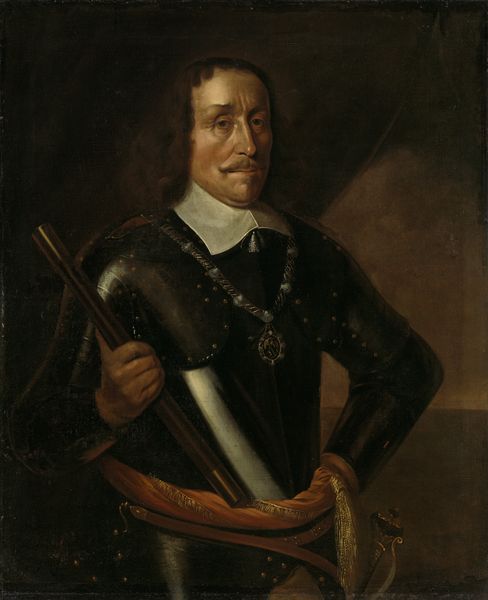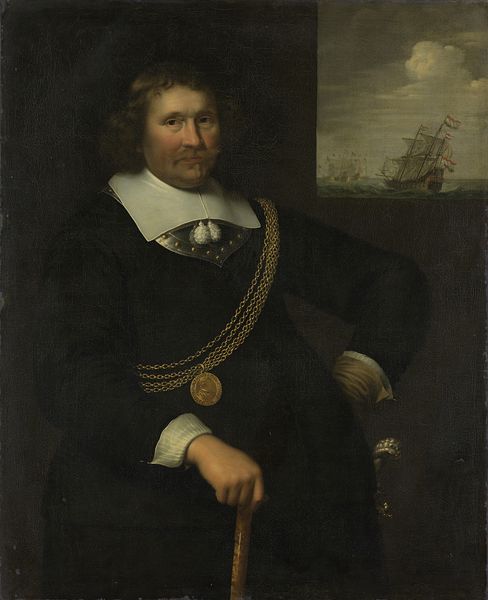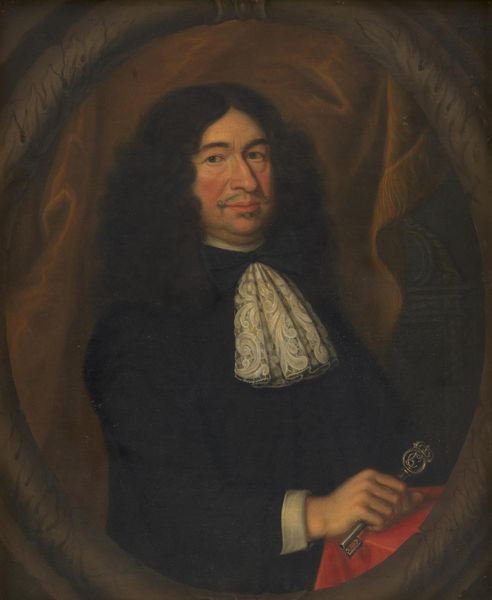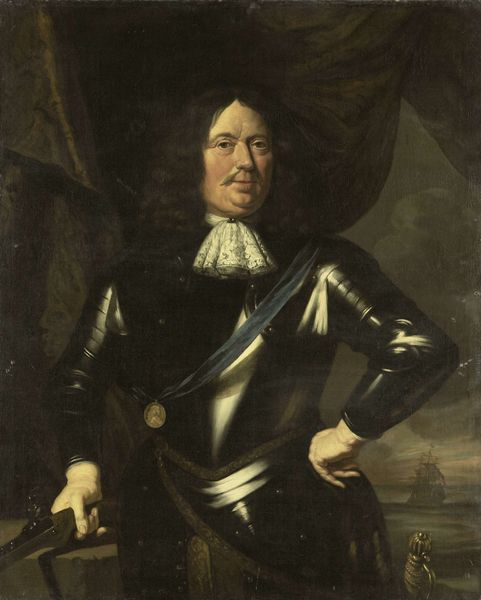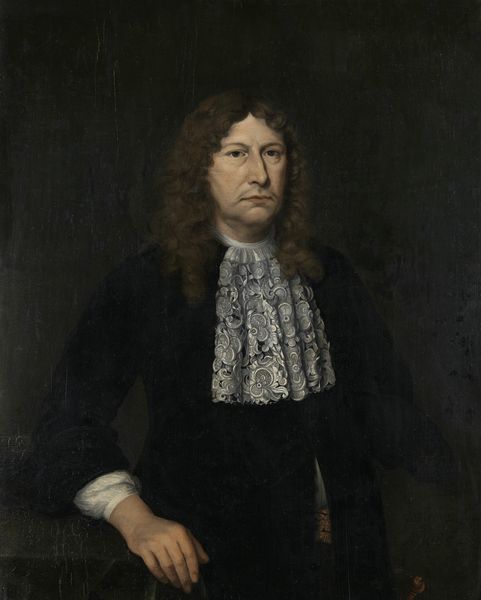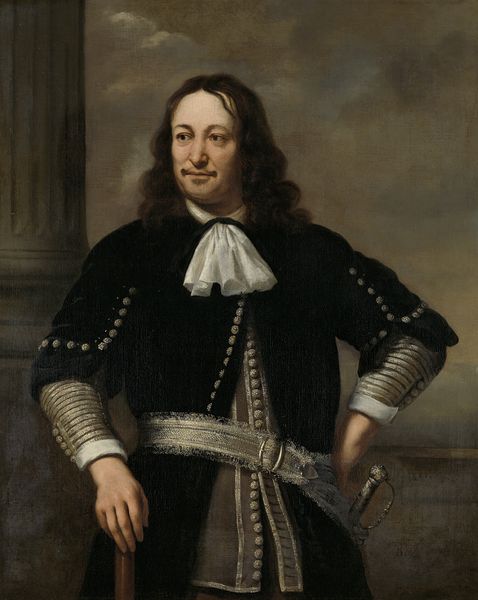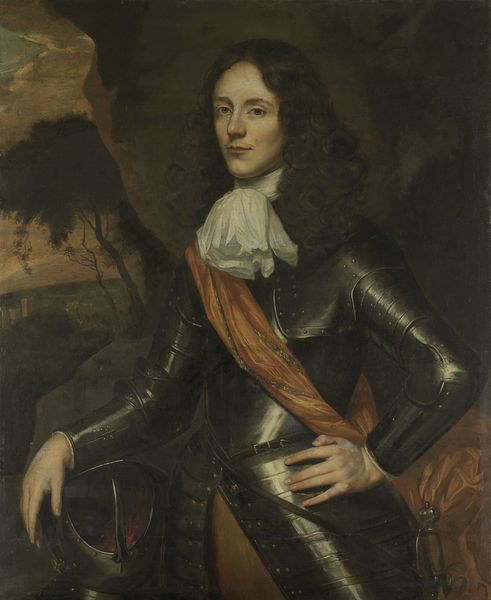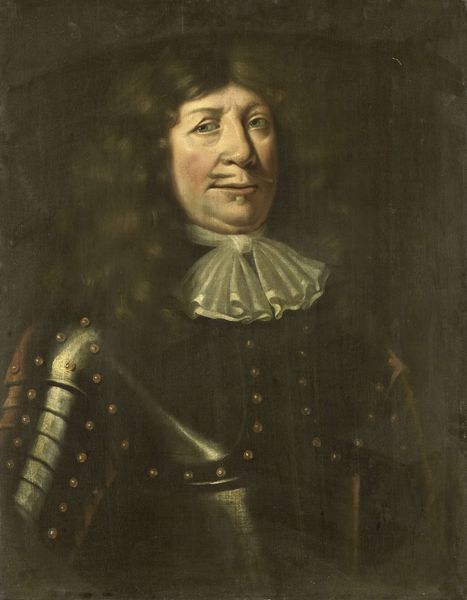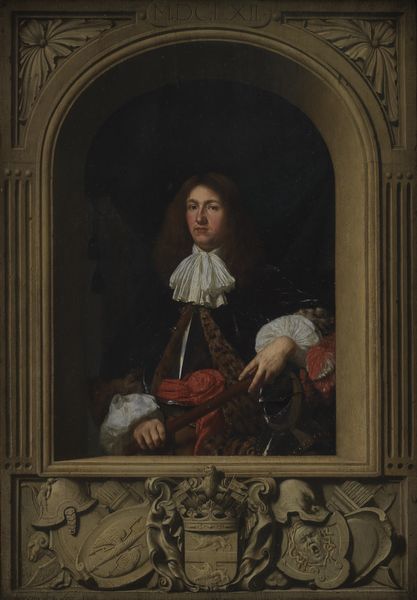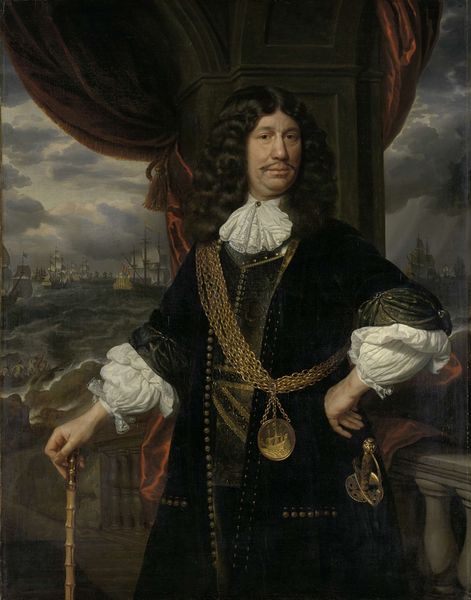
Pieter Florisz (ca. 1605-58), Vice-Admiral of the Northern District 1650 - 1720
0:00
0:00
oil-paint
#
baroque
#
oil-paint
#
oil painting
#
history-painting
Dimensions: height 119 cm, width 92 cm, depth 15 cm
Copyright: Rijks Museum: Open Domain
Editor: Here we have a portrait of Pieter Florisz, Vice-Admiral of the Northern District, rendered in oil paint sometime between 1650 and 1720, by Abraham Liedts. I find the stark contrast between the dark clothing and the bright white collar really striking. What formal qualities stand out to you? Curator: Notice how the artist organizes the composition around a series of oppositions: light and shadow, smooth and textured. Consider how the textures, ranging from the coarse brushstrokes defining the turbulent sky to the more delicate rendering of the lace collar, invite us to engage with the painting on a purely tactile level. Does the placement of these varied textural fields create points of emphasis or guide your gaze? Editor: I see what you mean! My eyes definitely move from the brighter collar, down the chains, then around the details on his coat. Are those spatial relationships deliberate choices by the artist? Curator: Precisely. The artist employs chains and garments as lines that orchestrate the viewing experience, establishing visual weights. The chains don't just indicate status, but actively participate in the visual rhythm of the painting, and establish a strong link between the collar and the face. We see a face, carefully arranged and balanced above all of these elements. Note also how the ships on the back contribute to a structured background. The ship composition helps to ground the subject matter. Do you see how these shapes balance one another to achieve visual stability? Editor: It’s interesting how the arrangement almost guides the viewer's eye without being immediately obvious. I hadn't considered how those visual lines worked until now! Thanks for clarifying the arrangement of the painting. Curator: And thank you. Analyzing Liedts' piece by discussing the use of line, texture, and visual balance provides an insight into the visual vocabulary available to baroque-era painters.
Comments
No comments
Be the first to comment and join the conversation on the ultimate creative platform.

